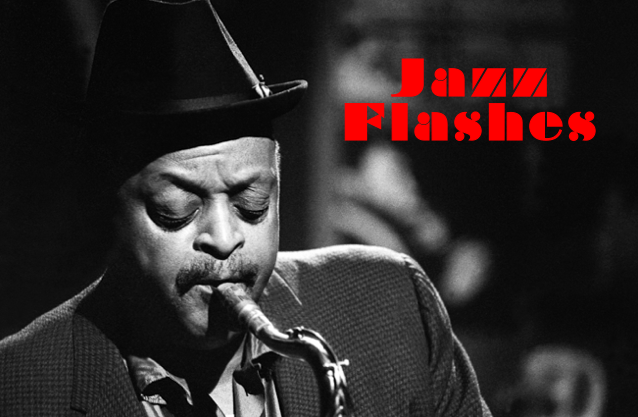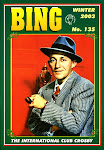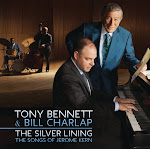By this time, Marvin was already proficient on the mouth harp, the musical saw, and a number of string instruments, including the guitar, the fiddle, the steel guitar, and particularly the ukulele, which ranked high in the preferences of the public due to the enormous success of Cliff "Ukulele Ike" Edwards. Though he had cut some records around 1924 with Sargent, Marvin began to make his mark on the record business with his solo records in the style of Edwards, some of which even featured Ukulele Ike's proto-scat routine known as "eefin'." Marvin's recording contract with Columbia, however, was not exclusive, so he was at liberty to make records for other companies, and his output was very prolific throughout the late 1920s, both on major and dimestore labels. Pitts and Hoffman report that, at the highest point in his career, "over ten million homes throughout the country owned Johnny Marvin records" (171), which, together with his successful vaudeville appearances, meant that he was a major force in two of the mainstream entertainment media of the day: records and vaudeville. And yet, despite the success of his performances of songs such as "Breezin' Along with the Breeze," "Half a Moon," and "All Alone Monday," Marvin has not remained associated with one particular tune, which may be one of the reasons for his current obscurity.
His popularity with the record-buying public opened the doors to Hollywood, and Marvin made several early short sound films for MGM and Vitaphone to promote some of his songs. While these shorts were praised by trade publications such Billboard and Variety, Marvin never got around to starring in a feature film like some of his contemporaries (Al Jolson, Rudy Vallee, Bing Crosby, to name but three) and so his main claim to fame in the cinematic medium lies in having been one of the main stars of short-subject sound films. In 1926, Marvin appeared, as Honey Duke (one of several pseudonyms under which he cut records) in the hit Broadway show Honeymoon Lane, recording several of the songs he sang on stage for different labels with a great deal of success. Around this time, he was in high demand as a provider of vocal refrains for dance-band records, often working with studio orchestras led by Nat Shilkret, Roger Wolfe Kahn, and Johnny Hamp, among others. A measure of his popularity is the fact that the Harmony company began selling an ukulele known as the Johnny Marvin ukulele, and his records were successful enough in England that in 1928 he signed a contract to appear at London's Kit Kat Club, an establishment that was popular with the cream of English society. By all accounts, Marvin was a big hit in England, though his London engagement was unfortunately cut short due to some throat problems that he developed while in the British Isles.
 |
| Frankie and Johnny Marvin |
 |
| An ad for the Johnny Marvin ukulele model |
As a radio personality, Marvin appeared in several shows, starring in one of them as Dr. Cheer for the NBC network in 1931. The concept behind the program was that he would sing songs inspired by problems described by listeners in their letters. Fortunately, some recordings of the show survive, and they can be found on the CD compilation A Voice of the 20s (Take Two). He also made some radio transcriptions for MacGregor in the late 1930s, but by that time he had mostly abandoned his recording activities to concentrate on songwriting. According to Pitts and Hoffman, his last commercial recording session (for Decca) took place sometime towards the end of the 1930s, but judging by some of the songs he cut ("Me and My Shadow" being one) he was mostly seen by then as a relic of what seemed like a distant past. During WWII, Marvin became involved with the USO, entertaining troops as far afield as the South Pacific, where he contracted malaria, and the disease would lead to his passing in December 1944, when he was merely 47 years old.
Anyone interested in getting acquainted with Johnny Marvin's melodious, smooth singing style and dazzling ukulele playing may seek out two CD releases. The aforementioned A Voice of the 20s features three tracks from the Dr. Cheer radio series (including a spoken commercial for Columbia Cleaners, the show's sponsor) as well as fine sides made between 1927-1930, like "I Still Get a Thrill," "Crazy Rhythm," "I'm in Seventh Heaven," and even the outstanding instrumental "12th Street Rag." Though now out of print, Breezin' Along with the Breeze (ASV / Living Era) is a rather comprehensive compilation of both solo recordings and dance-band sides for which Marvin provides vocal refrains, all cut between 1926-1930. Highlights include "Just Another Day Wasted Away," "Blue Skies" (a duet with Ed Smalle), "Ain't That a Grand a Glorious Feeling?," "Happy Days and Lonely Nights," and Al Jolson's "There's a Rainbow 'Round My Shoulder," among many others. Those who still remember Johnny Marvin today often tend to think of him as a composer of Western tunes performed by Autry and Roy Rogers, but that is only a small part of his legacy. If we go back to the late 1920s and early '30s, we will discover the appealing work of a smooth crooner and an excellent ukulele player. And, as Pitts and Hoffman remind us, it is a body of work that is awaiting rediscovery.
































